
Day 1 : Arrival into Antananarivo
Arrive into Antananarivo where you will be met by a Travel The Unknown representative and transferred to your hotel. Overnight in Antananarivo.
Overnight in Le Pavillon de l'Emyrne , Antananarivo
Meal plan: n/a
Activity | Wildlife | Tribal | Culture
Discover incredible nature and endemic wildlife
For those with less time, this tour is the perfect introduction to Madagascar. Arriving into Antananarivo (Tana) you will do a heritage walking tour and visit the cultural UNESCO site of Ambohimanga. Travel south to Madagascar's second city, Antsirabe, and take an optional bike ride around the lake and nearby paddy fields and villages. In Ambositra you will see how silk is produced and enjoy lunch with a local Malagasy family. Come face to face with lemurs and other wildlife in Ranomafana National Park, and witness the island's largest zebu market in Ambalavao (only Wed and Thu). Take a walking tour in the Anja Community Reserve before arriving into Isalo National Park. Spot more intriguing wildlife and birds on a trek through magnificent canyon scenery and take a dip in some of its natural pools. Drive to Tulear on the west coast stopping off at the impressive arboretum, home to many endemic species of flora and endangered tortoises. Finally unwind in Ifaty before your flight back to Tana.
Contact us for pre- or post-tour extensions.
Antananarivo - Ambohimanga - Antsirabe - Ambositra - Ranomafana National Park - Fianarantsoa - Isalo National Park - Ambalavao - Ranohira - Anja Community Reserve - Ilakaka - Ifaty - Tuléar - Reniala Nature Reserve

Arrive into Antananarivo where you will be met by a Travel The Unknown representative and transferred to your hotel. Overnight in Antananarivo.
Overnight in Le Pavillon de l'Emyrne , Antananarivo
Meal plan: n/a
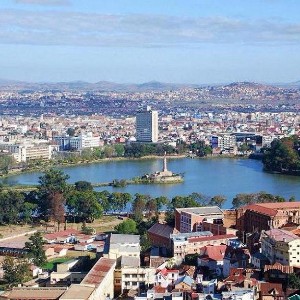
In the morning, visit the Old City before proceeding on a guided tour of the Ambohimanga Rova. En route, stop by the boutique market of Galerie Lisy and browse the large variety of handcrafted goods available. The evening is free at your leisure. Overnight in Antananarivo.
Overnight in Le Pavillon de l'Emyrne , Antananarivo
Meal plan: Breakfast
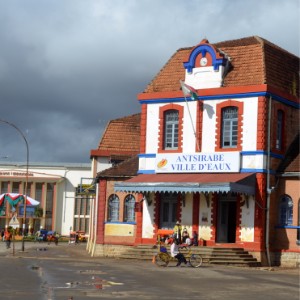
Following an early start, drive to Antsirabe on a tarred road and check in to your hotel on arrival. In the afternoon (around 14:00), enjoy a walking tour of the city including a ride in one of Antsirabe's famous colourful rickshaws, known as "pousse-pousse". The evening is free to relax. Overnight in Antsirabe.
Overnight in Couleur Café, Antsirabe
Meal plan: Breakfast
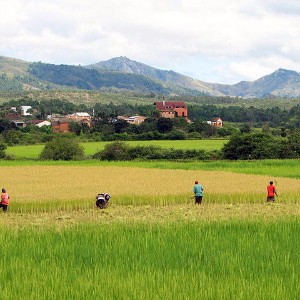
In the early morning, drive to Ambositra. Visit the Malagasy Silk Road, travelling from one village to another. First drive to Ivato Centre before taking a dirt road for about 10km to Soatanana. Home to the largest remaining forest of Tapia (the staple diet of silkworms), learn about how villagers are involved in the production of silk cloths and fabric used by Malagasy people on special occasions. You will have the opportunity to see each stage of the silk productions, from cocoon to weaving and dying. Lunch will be taken at people's place in one of the visited villages. Afters lunch, continue the drive to Ambositra. Overnight in Ambositra.
Overnight in Artisan Hotel, Ambositra
Meal plan: Breakfast
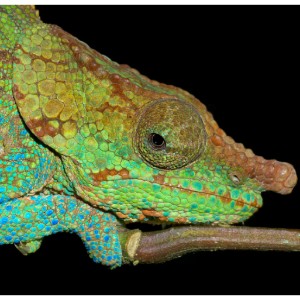
After breakfast, drive to Ranomafana National Park. In the afternoon, visit the thermal bath before enjoying a night walk on the outskirts of the national park. Overnight in Ranomafana.
Overnight in Centrest Séjour, Ranomafana National Park
Meal plan: Breakfast

Enjoy a full day exploring Ranomafana National Park. The classic routes inside the park will take you on walks ranging from 4 to 6 hours. Keep an eye for the various lemur species (including the greater and golden bamboo lemur, red-bellied lemur, red-fronted brown lemur and Milne Edward’s sifaka) as well as the different types of birds, including the ground rollers (pitta-like and rufous headed mainly) and velvet and common sunbirds asities. Please note, birdwatching walks must be done very early in the day. In the afternoon, return to the hotel. Overnight in Ranomafana National Park.
Note: While the park's path network has improved in recent years, paths still vary from moderate to steep and are often slippery. Therefore, reasonable fitness is required.
Overnight in Centrest Séjour, Ranomafana National Park
Meal plan: Breakfast
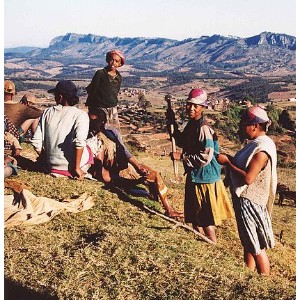
In the early morning, drive south to Fianarantsoa, where you will arrive at around 9:00 after a 1.5-hour drive on a tarred road. On arrival, visit the Betsileo tribe and observe their daily life. Begin your walk at the Saint-Francois seminary before heading down the valley, noting the traditional architecture along the way. Enjoy lunch in a local house and learn about the authentic Betsileo culture and traditions. In the afternoon, return to the hotel where the rest of the day is free to relax. Overnight in Fianarantsoa.
Overnight in Ecole Hôtelière La Rizière, Fianarantsoa
Meal plan: Breakfast & lunch

After breakfast, proceed on a walk to the old city of Fianarantsoa, reachable only by foot. Walk up to the water tank and enjoy panoramic views over Fianarantsoa. Continue to the eastern part of the city and the Fianarantsoa University area, where you will visit a workshop which specialises in handmaking portable ovens from argile. After, proceed along the dirt road to the Mahatsiatra River and board a canoe for a relaxing river tour. Packed lunch will be taken on the river bank. End the canoe tour in the Sahambavy area, where Madagascar's only tea estate is located. Unfortunately it is not possible to visit, but you’ll be able to see views over the tea fields. In the mid afternoon, return to your hotel, stopping at the workshop of the famous Malagasy photographer Piero Men along the way. Overnight in Fianarantsoa.
Overnight in Ecole Hôtelière La Rizière, Fianarantsoa
Meal plan: Breakfast & lunch
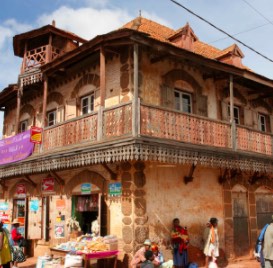
In the morning, drive to Ambalavao and visit the biggest zebu market in Madagascar (held every Wednesday and Thursday). Continue south of the city and enjoy a 2 hour visit to the Anjà Community Reserve. On arrival in Isalo National Park, the rest of the day is at your leisure. Overnight in Isalo National Park.
Overnight in Le Relais de la Reine, Isalo National Park
Meal plan: Breakfast & dinner
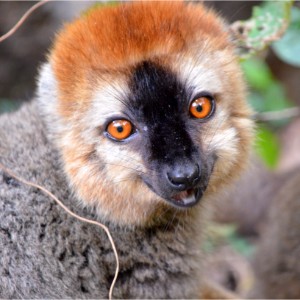
Enjoy a full day exploring Isalo National Park. The recommended walk (from 5 to 6 hours walk) today takes you from the dry and hot crest trail to the green and lush canyons. Return to the hotel in the middle afternoon. In the early evening, enjoy a short walk (about 10min) on the property to reach a scenic viewpoint for the sunset. A selection of snacks, wines, soft drinks and local beers will be available while you enjoy a performance from a Bara dancing and singing group. Overnight in Isalo.
Overnight in Le Relais de la Reine, Isalo National Park
Meal plan: Breakfast & dinner
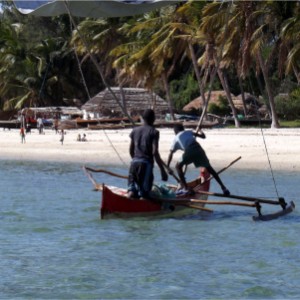
Following an early departure, drive to Ilakaka and visit the open sky sapphire mines, watching the workers as they sift in the rivers for sapphires. This visit is organized by Colorline, a Swiss owned company which buy, polish and export sapphire to the international market. End the tour with a visit of the showroom. Continue to Tuléar, visiting Antsokay Arboretum along the way (visit approx. 1.5 hours). On arrival in Ifaty, transfer to the hotel where the rest of the day is free to relax. Overnight in Ifaty.
Overnight in Le Paradisier, Ifaty
Meal plan: Breakfast
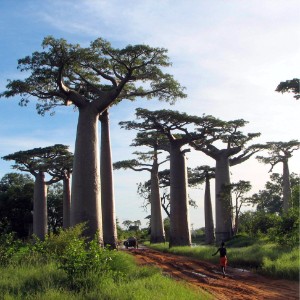
In the early morning, take an optional nature walk to spot birds in the surrounding spiny forest. The rest of the day is free to relax or explore at your leisure, with a wide choice of excursions and activities available, including snorkeling on the Massif des Roses or exploring the lagoon with local fishermen. In the evening (at around 17:00), drive to Reniala Nature Reserve and explore the botanical garden and spiny forest, keeping an eye open for Subdesert Mesites and long-tailed ground rollers. After, enjoy dinner in the middle of the reserve, served at the bottom of the baobabs (only possible if group size is larger than 4). Overnight in Ifaty.
Overnight in Le Paradisier, Ifaty
Meal plan: Breakfast & dinner

Transfer to Tuléar airport for your flight back to Antananarivo. On arrival, transfer to the hotel. Depending on your flight arrival time, explore the local market or have a short walk in your hotel area to visit the city. Overnight in Antananarivo.
Overnight in Hôtel & Spa Palissandre, Antananarivo
Meal plan: Breakfast & dinner

The morning is free to rest or explore at your leisure. At the appropriate time, transfer to the airport for your international flight home.
Meal plan: Breakfast
All accommodation subject to availability. Final accommodation choices will be confirmed after booking.

Located in the Old City of Antananarivo, Le Pavillion de l'Emryne is set in a restored colonial house built in 1930. Each room is individually decorated with beautiful antique furniture, as well as equipped with all modern amenities including air-conditioning, flat-screen TVs and free WiFi. The hotel restaurant prides itself on its traditional Malagasy dishes.

Situated 500 metres from the city centre, the Couleur Cafe houses an on-site bar, restaurant and private bathrooms in each room. Free WiFi and parking are available.

The Artisan Hotel is praised for its attention to detail and spacious bungalows, which feature traditional woodcarvings and construction methods. Guests are welcome to enjoy the range of authentic Malagasy cuisine or international dishes served in the onsite restaurant.

Located on the edge of Ranomafana National Park, Centrest Séjour is the area's closest lodge to the park and boasts panoramic views over the nearby village. Rooms are simply but comfortably furnished with tiled floors, whitewash walls and pine covered ceilings, and equipped with modern essentials including en-suite bathrooms, fans and mosquito nets. A spacious onsite restaurant serves a variety of both Malagasy and French cuisine.

Ecole Hôtelière La Rizière is highly unique as it combines an educational centre with the hotel, allowing the youth of Madagascar in precarious financial situations to learn skills in hospitality. The onsite restaurant, Vary Mena, offers a range of refined cuisine, while the pavilion offers beautiful views over the city and rice fields.

A luxurious destination, Hotel Le Relais de la Reine hosts a range of comforts, including a pool, tennis courts and equestrian centre. Built from natural materials, the lodge blends seamlessly into its dramatic surroundings. Rooms are stylishly decorated with wooden floors and equipped with en-suite facilities and verandas. while guests are welcome to enjoy dinner in the attractive dining room, complete with an open fire for cooler days.

Le Paradisier Hotel houses an infinity pool overlooking the spectacular southern beaches of Ifaty. It is located just 10 minutes from the village and is nearby mangroves and a Baobab forest. All rooms are stylishly set within stone rondavels, constructed from stone walls, polished wooden floors and thatched roofs. Guests are welcome to enjoy the hotel restaurant and its range of French, Italian and Malagasy cuisine.

Hôtel & Spa Palissandre is a comfortable hotel located on a hillside in the centre of Antananarivo, overlooking the famous Avenue of Independence. The hotel offers a wide range of services, including a spa, a cocktail bar with a welcoming atmosphere and a restaurant that blends local specialties and traditional French cuisine. The hotel terrace, where you can dine, is a perfect place to observe and admire sunset over the capital.
Discover bizarre and unique animals of the world's '8th continent'
Explore one of Madagascar's best National Parks
Discover Madagascar's native animals and exotic birds
Take a cycling tour of Madagascar's 2nd city
Trek through Madagascar's forests and roam its coastline
Soak up the sun on one of Madagascar's idyllic beaches
Rock-hewn churches, dramatic landscapes and endemic wildlife.
Discover incredible nature and endemic wildlife
The Eighth Continent calls the adventurer in you.
Judith Bate , Hidden Treasures of MadagascarIt was an amazing trip. We saw so many different areas of Madagascar and had so much variety in our itinerary. We were extremely fortunate to have Alain as our guide. His knowledge of the botany, wildlife, history, peoples, customs etc of Madagascar was exceptional. His love of his country was obvious and he was passionate about sharing his knowledge with us. I will definitely recommend Travel The Unknown's tour of Madagascar to others.
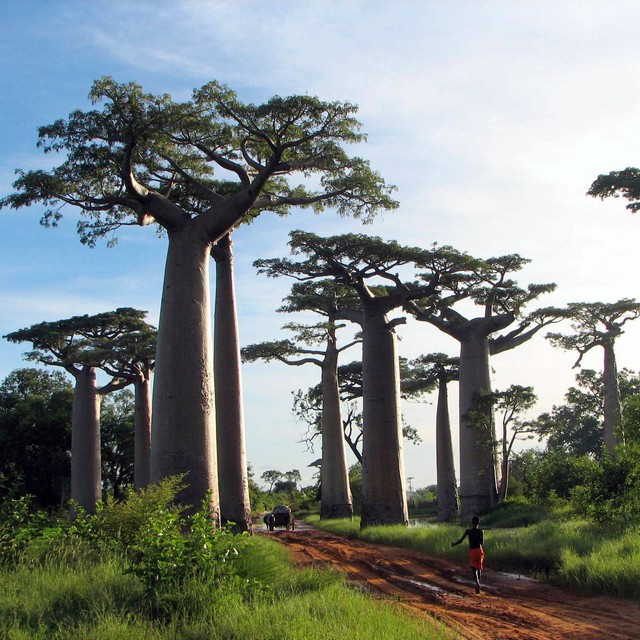
Janet Douglas , Hidden Treasures of MadagascarWe had an excellent trip to Madagascar. The guide was superb - very, very knowledgeable and personable. All went very well. Madagascar is not for the fainthearted though - very long travelling days on poor roads would discourage some, as would the poverty especially in the country. But the people are friendly, the accommodation and food very good, the scenery very interesting to spectacular and the wildlife(especially the lemurs) are wonderful.
